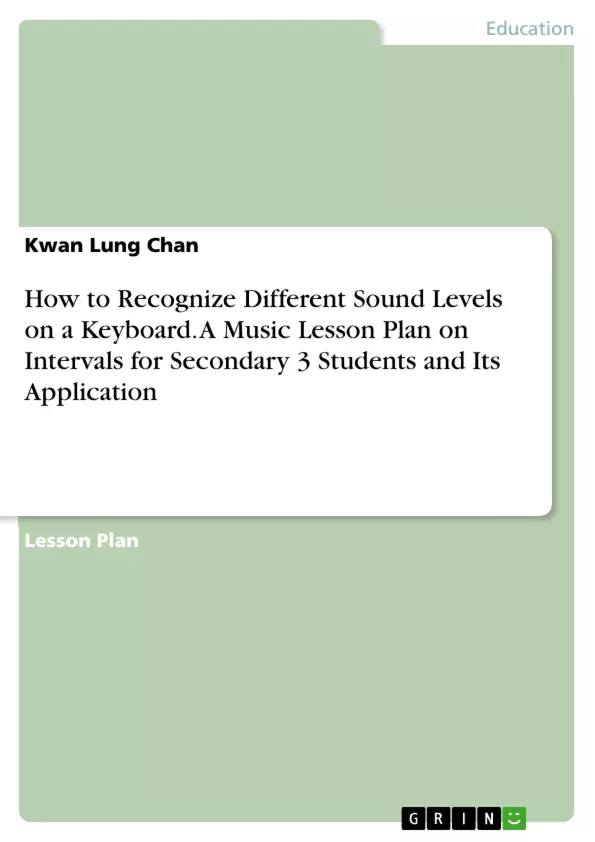This lesson plan is for a secondary 3 music lesson on the topic of intervals.
I will analyze the lesson plan by first explaining what the students are supposed to acquire after the lesson (learning outcome), and then how learning activities are planned to achieve the learning outcomes, and finally the assessment tasks designed to monitor students’ progress in achieving the learning outcomes and enhance memory retention.
Students are expected to patiently learn music theory and appreciate the beauty of different interval combinations.
Besides that, the students are also expected to learn how to produce different sound qualities using the keyboard.
Inhaltsverzeichnis (Table of Contents)
- Introduction
- Learning Outcome
- Introduction
- Background of the lesson
- Prior Knowledge
- What are students expected to learn?
- Learning Activities
- Introduction
- Gain attention
- Stimulate recall of prior knowledge
- Inform objectives
- Present material
- Assessment
- Introduction
- Guided practice
- Independent practice
- Extended practice
- Conclusion
Zielsetzung und Themenschwerpunkte (Objectives and Key Themes)
This lesson plan focuses on teaching secondary 3 music students about intervals, aiming to equip them with the ability to identify and understand various interval qualities, both aurally and visually. The plan emphasizes a practical approach, incorporating keyboard exercises and incorporating relevant psychological and pedagogical theories to facilitate learning and memory retention.
- Understanding different interval qualities, including augmented, major, minor, diminished, and perfect.
- Developing aural recognition of interval qualities and the ability to distinguish them by sound.
- Mastering the practical skill of producing different interval qualities on the keyboard.
- Integrating learning strategies such as spaced repetition, schema activation, and guided practice to enhance memory retention and conceptual understanding.
- Applying pedagogical theories like Gagné's nine events of instruction and Vygotsky's zone of proximal development to create an effective learning environment.
Zusammenfassung der Kapitel (Chapter Summaries)
The "Introduction" section presents the overall aims and structure of the lesson plan, outlining the expected learning outcomes and the theoretical framework guiding its design. The "Learning Outcome" chapter delves into the specific knowledge and skills students are expected to acquire, analyzing their prior knowledge and the different learning domains involved. The "Learning Activities" chapter details the various activities designed to facilitate student learning, explaining how they are grounded in psychological theories and address different learning styles. Finally, the "Assessment" chapter discusses the various methods of assessing student progress and how these assessments are integrated into the lesson plan to monitor learning and enhance memory retention.
Schlüsselwörter (Keywords)
The lesson plan focuses on key concepts such as interval qualities, musical theory, aural recognition, keyboard skills, spaced repetition, schema activation, Gagné's nine events of instruction, Vygotsky's zone of proximal development, and constructivist alignment.
- Arbeit zitieren
- Kwan Lung Chan (Autor:in), 2015, How to Recognize Different Sound Levels on a Keyboard. A Music Lesson Plan on Intervals for Secondary 3 Students and Its Application, München, GRIN Verlag, https://www.hausarbeiten.de/document/448238


